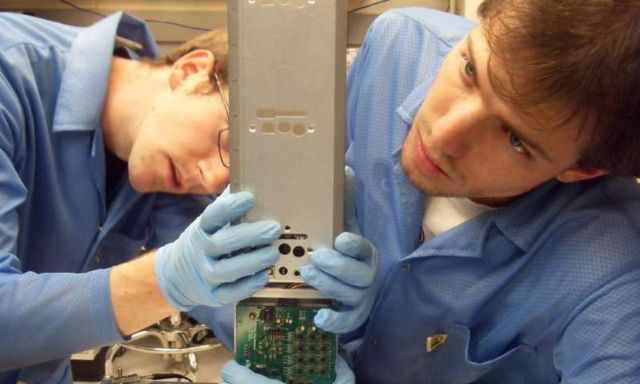A student satellite solved a 60-year-old major space mystery, regarding the source of some energetic and potentially damaging particles in Earth‘s radiation belts.
A team of more than 65 students designed, built and operated a small CubeSat satellite that helped researchers discover energetic electrons in the inner Van Allen radiation belt, believed to be created by cosmic rays bombarding Earth’s atmosphere.
The results from the new study indicate energetic electrons in Earth’s inner radiation belt—primarily near its inner edge—are created by cosmic rays born from explosions of supernovas, said the study’s lead author, Professor Xinlin Li of CU Boulder’s Laboratory for Atmospheric and Space Physics (LASP).
Earth’s radiation belts, known as the Van Allen belts, are layers of energetic particles held in place by Earth’s magnetic field.
 Image credit University of Colorado
Image credit University of Colorado
The team showed, during a process called “cosmic ray albedo neutron decay” (CRAND), cosmic rays entering Earth’s atmosphere collide with neutral atoms, creating a “splash,” which produces charged particles, including electrons, that become trapped by Earth’s magnetic fields. The findings have implications for understanding and better forecasting the arrival of energetic electrons in near-Earth space, which can damage satellites and threaten the health of space-walking astronauts, said Li.
Li, also a professor in CU Boulder’s aerospace engineering sciences department, said:
“We are reporting the first direct detection of these energetic electrons near the inner edge of Earth’s radiation belt. We have finally solved a six-decade-long mystery.”
Top image credit NASA
source University of Colorado at Boulder






Leave A Comment